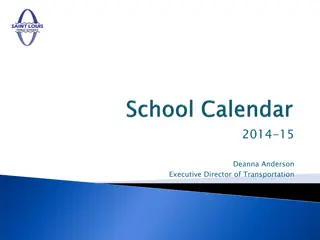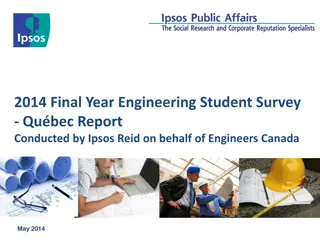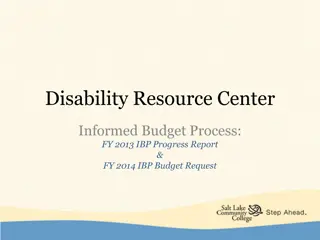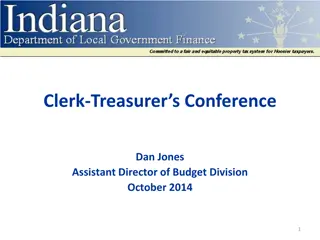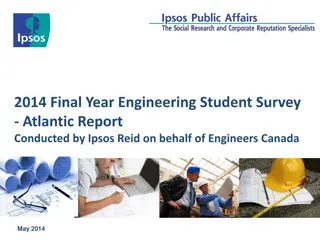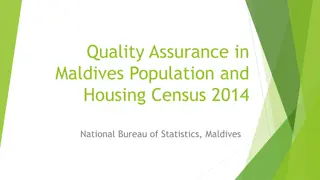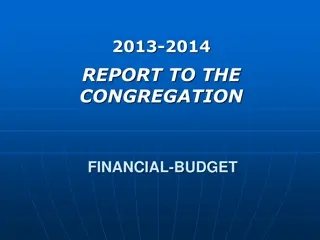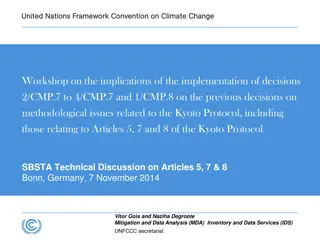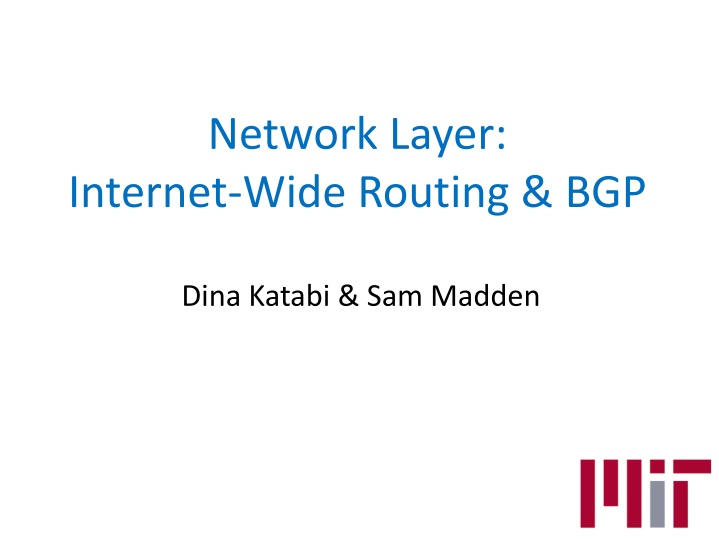
Internet-Wide Routing & BGP for Efficient Network Management
Explore the intricacies of Internet-Wide Routing and BGP protocol, crucial in managing networks efficiently. Learn about inter-domain routing, hierarchical addressing, scalability requirements, and more to optimize routing strategies. Discover how the Internet functions as a network of Autonomous Systems (ASs) and the importance of policy-compliant routing.
Download Presentation

Please find below an Image/Link to download the presentation.
The content on the website is provided AS IS for your information and personal use only. It may not be sold, licensed, or shared on other websites without obtaining consent from the author. If you encounter any issues during the download, it is possible that the publisher has removed the file from their server.
You are allowed to download the files provided on this website for personal or commercial use, subject to the condition that they are used lawfully. All files are the property of their respective owners.
The content on the website is provided AS IS for your information and personal use only. It may not be sold, licensed, or shared on other websites without obtaining consent from the author.
E N D
Presentation Transcript
Network Layer: Internet-Wide Routing & BGP Dina Katabi & Sam Madden
Inter-Domain Routing Interior router Border router AT&T Sprint MIT The Internet is a network of Domains of Autonomous Systems (ASs) E.g., MIT, AT&T, Stanford, Internally, each AS runs its own routing protocol (e.g., Distance Vector) Autonomy Across ASs, we run a different routing protocol (called BGP)
Requirements of Internet-Wide Routing Scalability Small routing tables: Cannot have an entry per machine causes large look up delay Small message overhead and fast convergence: A link going up or down should not cause routing messages to spread to the whole Internet Policy-compliant Shortest path is not the only metric; Internet Service Providers (ISPs) want to maximize revenues!
Idea for Scaling Need less information with increasing distance to destination Hierarchical Routing and Addressing
Hierarchical Addressing The IP address space is divided into segments of contiguous chunk of addresses; each such segment is described by a prefix. A prefix is of the form x/y where x is the prefix of all addresses in the segment, and y is the length of the segment in bits Addresses that start with same prefix are co-located E.g., all addresses that start with prefix 18/8 are in MIT Entries in the routing/forwarding table are for IP prefixes shorter routing tables
Hierarchical Addressing MIT 18/8 EECS 18.26/16 Mechanical 18.17/16 Dorms 18.0/16 CSAIL 18.26.128/17 9th Floor in CSAIL 18.26.240/24 Forwarding tables in Berkeley can have one entry for all MIT s machines. E.g., (18/8, output-link) Forwarding tables in Mechanical Engineering have one entry for all machines in EECS But, a switch on the 9th floor subnet knows about all machines on its subnet
Longest Prefix Match A Router forwards a packet according to the entry in the forwarding table that has the longest matching prefix Router Forwarding Table Destination Out-link 18/8 out-link 1 18.26/16 out-link 2 18.20.0/24 out-link 3 Dst = 18.26.1.1 Link 1, output 18.26/16 out-link 2 Link 2, output Link 3, output
Hierarchical addressing and routing give us scalability Still need to tackle policies
Inter-AS Relationship: Transit vs. Peering AS-1 Transit ($) Transit ($) Peering (no money) AS-2 AS-3 Transit ($) Transit ($) Transit ($) MIT NYU Transit relationship One AS is a customer of the other AS, who is the provider; customer pays provider both for sending and receiving packets Peering relationship Two ASs forward packets for each other without exchanging money
Policy-Based Routing Main Rule: An AS does not transit traffic unless it makes money of it Note Customer pays for both incoming and outgoing traffic
Desirable Incoming Policies AS-1 AS-4 Transit Transit Transit Peering Transit AS-2 AS-3 Transit Transit Transit Stanford MIT NYU AS-2 likes AS-3 to use the peering link to exchange traffic between their customers saves money because it bypasses AS-1 But, AS-2 does not want to forward traffic between AS-3 and AS-4 because this makes AS-2 pay AS-1 for traffic that does not benefit its own customers
How Does AS-2 Control Incoming Traffic? AS-1 AS-4 Transit Transit Transit Know a route to P Peering Transit AS-2 AS-3 Traffic to P Transit Transit Transit P AS-2 advertises to AS-3 a route to its customer s IP prefix P AS-2 does not tell AS-3 that it has a route to AS-4, i.e., it does not tell AS-3 routes to non-customers IP-prefixes
Desirable Outgoing Policies AS-2 will hear 3 paths to P from its neighbors AS-1 Transit Transit Peering AS-2 AS-3 Transit AS-2 prefers to send traffic to P via its customer AS-5 rather than its provider or peer despite path being longer AS-5 Transit AS-7 P
How Does AS-2 Control Outgoing Traffic? AS-1, AS-3, and AS-5 advertise their routes to P to AS-2 But AS-2 uses only AS- 5 s route (i.e., it inserts AS-5 s route and the corresponding output link into its forwarding table) AS-1 Transit Transit Peering AS-2 AS-3 Transit AS-5 Transit P
Enforcing Policies (i.e., making money) Route Export: controls incoming traffic AS advertises its customers (and internal prefixes) to all neighbors AS advertises all routes it uses to its customers (and internally) Route Import: controls outgoing traffic For each dst. prefix, AS picks its preferred route from those in its routing table as follows: Prefer route from Customer > Peer > Provider Then, prefer route with shorter AS-Path
BGP: Border Gateway Protocol 1. Advertize whole path P:{AS-20, AS-6} P:{AS-6} AS-6 AS-2 AS-20 P Loop detection an AS checks for its own AS number in advertisement and rejects route if it has its own AS number 2. Incremental updates AS sends routing updates only when its preferred route changes (Messages are reliably delivered using TCP) Two types of update messages: advertisements, e.g., P:{AS-20, AS-6} and withdrawals withdraw P
BGP Update from neighbor AS Advertise preferred route according to policy Filter Imported routes, and update Routing table Send Update to neighbors Pick Preferred Route for forwarding Note: BGP Router can advertise only the preferred (i.e., currently used) route
BGP Update Message Processing When AS receives a withdrawal If withdrawn path not used/preferred, remove from routing table If withdrawn path is used i.e., preferred Remove the path from forwarding table and routing table insert the next preferred path from the routing table into forwarding table For each neighbor decide whether to tell him about the new path based on policies If yes, advertise the new path which implicitly withdraws the old path for the corresponding prefix If no, withdraw old path When AS receives an advertisement, For each destination prefix, Learn paths from neighbors Ignore loopy paths and keep the rest in your routing table Order paths according to AS preferences Customers > peers > providers Path with shorter AS hops are preferred to longer paths Insert the most preferred path into your forwarding table Advertise the most preferred path to a neighbor according to policies
Summary Hierarchical addressing and hierarchical routing improve scalability Inter-domain routing is policy-based not shortest path An AS forwards transit traffic only if it makes money from it BGP is a path vector routing algorithm that implements policy-based routing

